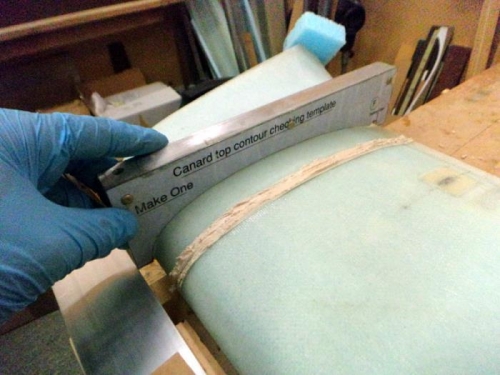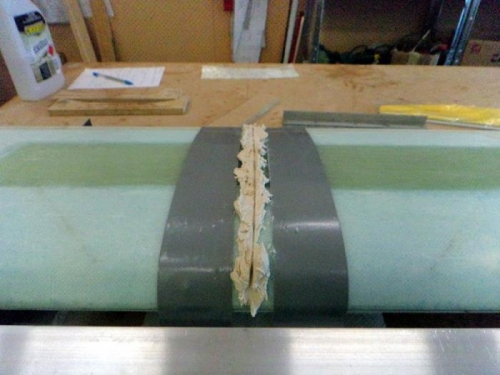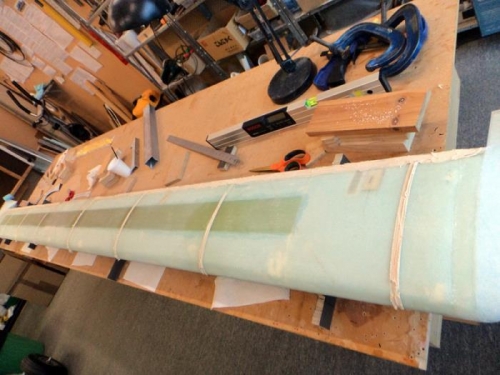| Date: 03-04-2015 | |
| Number of Hours: 10 | |
| Manual Reference: 25-4 |
So begins the profiling of the canard, the most important of the build. I’ve spent days trying to work out how to do this. I’m still not 100% sure but doing it anyway.
I’m already close to the correct curve in bare glass and have a base line drawn on the leading edge that I’ll work the template from matched with the TE position. The idea is to make several stations at the correct height by dropping the template into wet feather fill (I’m using West 410) and establish a top contour in strips and then use this as a high point to work between. It’s covered in the West literature so not a new method yet rarely done by canard people.
I made 8 piles or stations as best I could yet it didn’t cure the next day! Turns out my scales had a drop of glue on them bridging the weigh plate and the base that caused an incorrect reading so while the numbers were right the amount of hardener I put in was not. Hmmm another day or two gone getting all that work scraped off and down to a pristine undamaged surface to try again. Naturally I just did half the canard this time…just in case.
It worked out OK but this method seems pretty rough as I have so little to fill and the paste filler doesn’t give a very clean line. Good enough to get a feel for where we are and I can see how to use the minimum amount i.e down to the glass for the lowest point and work from there. I spent an hour or two sanding with my long permagrit stick then mixed another batch to make lines on the second half of the canard. I did a bit of a fill on the TE too with the mix I had prepared.
More sanding tomorrow and I’ll have the beginnings of a base line to add the filler in between. This is gonna take a while and I have some skills to learn and various methods to try with a cure cycle each time.
Template markings
Template high points
Multi places



